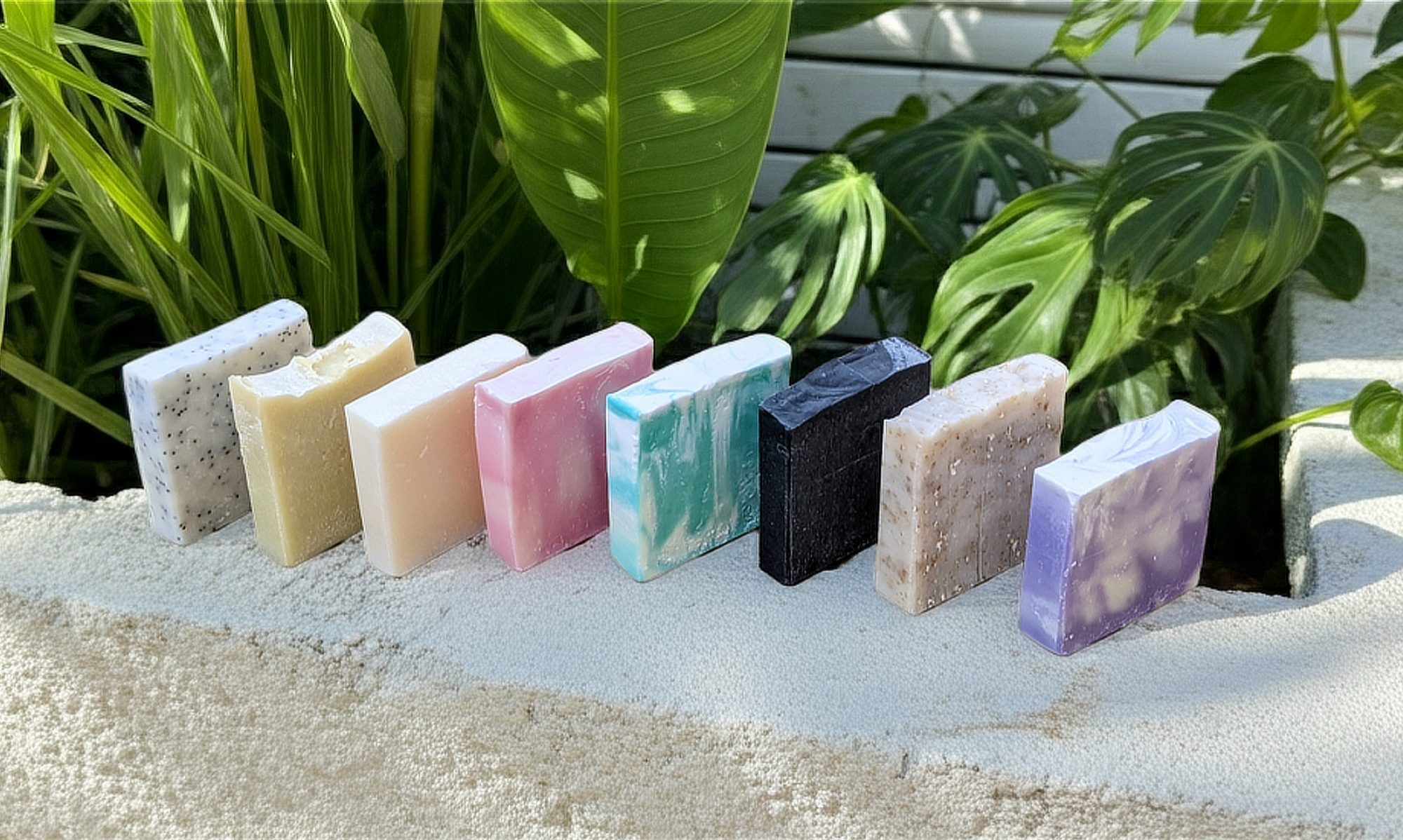At La Zouch Soaps, every bar tells a story of craftsmanship, sustainability, and skin-loving ingredients. One of the most traditional and rewarding methods we use is the cold process technique. It’s a slow, deliberate art that transforms natural oils and butters into luxurious soap without the need for external heat. Curious how it all comes together? Let’s take you behind the scenes.
What Is Cold Process Soap?
Cold process soap is made by combining oils or fats with a lye solution (sodium hydroxide mixed with water), triggering a chemical reaction called saponification. This method preserves the integrity of delicate ingredients like essential oils and plant-based butters, making it ideal for nourishing, vegan-friendly skincare.
Ingredients We Love
At La Zouch Soaps, we choose ingredients that are kind to your skin and the planet:
- Olive oil, deeply moisturizing and gentle
- Coconut oil, adds cleansing power and a rich lather
- Shea butter, highly moisturising with skin-soothing properties
- Essential oils, like pink grapefruit or bergamot for natural fragrance
- Mica for colour
Tools of the Trade
Making cold process soap requires a few essentials:
- Heat-resistant mixing bowls
- Accurate digital scales
- Hand blender
- Silicone moulds
- Safety gear: gloves, goggles, and long sleeves
Step-by-Step: The Cold Process Method
Here’s how we turn raw ingredients into beautiful bars:
- Prepare the lye solution
Carefully mix sodium hydroxide with cold distilled water. Always add lye to water, not the other way around, to avoid a volcanic reaction. Let it cool to around 40°C. - Melt and blend the oils
Combine your chosen oils and butters, gently heating until fully melted. Allow them to cool to close to the lye temperature. - Combine and emulsify
Slowly pour the lye solution into the oils. Use a blender to mix until you reach “trace”, when the liquid begins to thicken, that means saponification has begun. - Add fragrance, colour and extras
Stir in essential oils, mica or exfoliants. This is where artistry meets chemistry. - Pour and insulate
Pour the mixture into moulds, tap to release air bubbles, and if the weather is cold then insulate with a towel to encourage gel phase (which enhances colour and texture) and avoid an “ashy top”. - Unmould and cure
After 48 hours unmould the soap and cut into bars. Then, the magic of patience: cure for 4 weeks to allow water to evaporate and the soap to harden.
Why We Love It
Cold process soap isn’t just a product, it’s magic. It allows us to:
- Customise different batches for different skin types (sensitive, dry skin, oily skin)
- Avoid synthetic detergents and preservatives
- Celebrate the beauty of natural ingredients
Whether you’re a seasoned soap enthusiast or just dipping your toes into the world of artisan skincare, cold process soap offers a luxurious, eco-conscious alternative to commercial bars. And at La Zouch Soaps, every bar is made with intention, integrity, and a splash of creativity.
Want to learn more about our ingredients or explore our latest creations? Visit our shop or follow us on Instagram for more!



